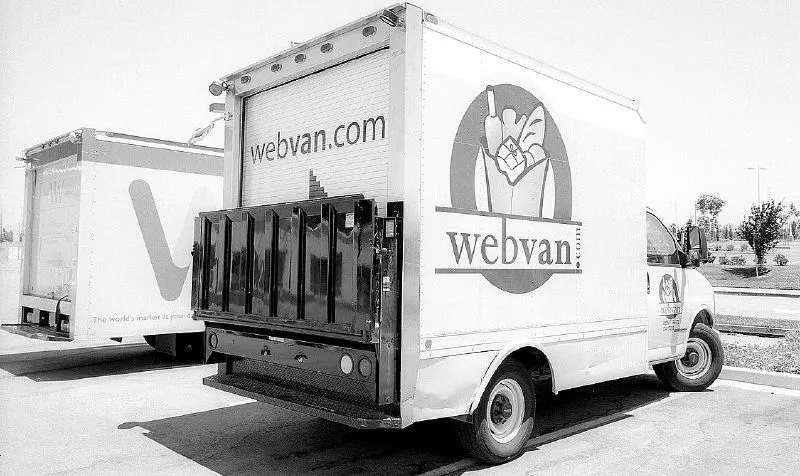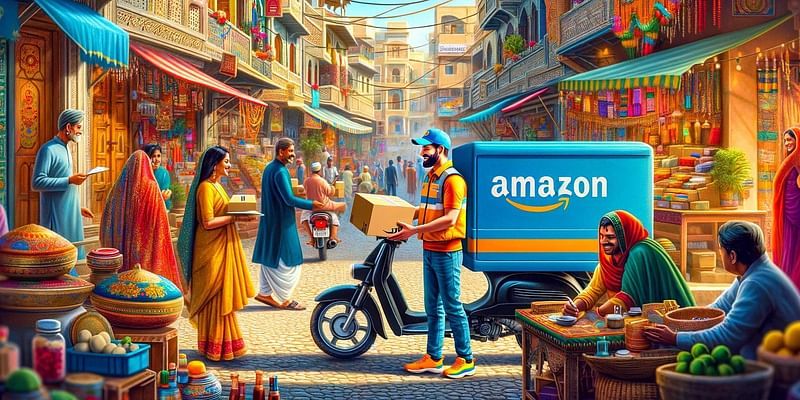[Famous Failures] The grocery e-tailer that raised over $800 million and went public before filing for bankruptcy
Imagine a startup way ahead of its time. A startup that promised delivery of groceries within 30 minutes of ordering, from state-of-the-art order fulfillment centers manned by advanced robots. A startup that raised VC funds and even had a blockbuster IPO after which it was valued at $1.2 billion at its peak, before racking up $830 million in losses and filing for bankruptcy within a few more months. All of this, fifteen years ago in 1999. In this second part of the ‘Famous Failures’ series, we examine Webvan, the poster child of the excesses that defined the initial dotcom bust, to learn important lessons in scaling. (Previous Famous Failures series – Better Place car company in Israel)
The US grocery industry is estimated to be about $603 billion annually, of which only about 1.2% is currently being done online. Further, the profit margins in this segment of the e-commerce sector are wafer thin at about 1.1%. It is a tough market now, where the ROIs are closely tied to the brutal extraction of efficiencies. It was a tougher market back then. So why exactly did Webvan fail?

Too much money, too early
Webvan raised close to $800 million from blue chip VC funds like Sequoia Capital, Benchmark Capital, Softbank, Goldman Sachs and even Yahoo. The company also raised $375 million from its IPO where it sold 25 million shares at $15 each. All of this within a few months of launching the company! Mike Moritz, the Sequoia Partner who was the board member at Webvan, said in an interview that the company “committed the cardinal sin of retail, which is to expand to expand into a new territory…before we had demonstrated success in the first market. In fact, we were busy demonstrating failure in the Bay Area market while we expanded into other regions.”
Webvan, headquartered in Foster City, California, announced grand plans of expanding and delivering the service from 26 different cities across the US even before proving the product-market fit in the San Francisco Bay Area. It was offering services from 10 active markets including San Francico Bay Area, San Diego, Los Angeles, Sacramento and Orange County in California along with Dallas, Chicago, Seattle, Portland and Atlanta. These were far-flung states, which would not optimize resource usage and it would seem, even demonstrate similar demographic behavior. Startups since then have learned that the Bay Area is a good test bed for tech innovations given the early adoption of products by this market, but it necessarily does not mean similar adoption by the rest of the US or the world.
Team with no supermarket experience
Webvan was founded by Louis Borders, who also co-founded the Borders bookstore in 1971, which was in existence till 2011. The company then recruited the CEO of Andersen Consulting (now Accenture) George Shaheen, who led the company from the time it became independent in 1989 and took its revenues from $1.1 billion to $8.3 billion. As the losses mounted and George Shaheen had to be replaced, he had to be provided a golden parachute of $375,000 per year for the rest of his life, based on the initial employment agreement! Even the new CEO Robert Swan was hired from GE and not from any grocery or supermarket business. This is the same pattern that we noticed in Better Place, where none of the senior management team members had any prior experience in running an automobile division, let alone a company. One wonders about how an amazing story and personal charisma of a single leader can warp the collective wisdom of all investors involved.
GBF versus MVP
The mantra that the current generation of entrepreneurs is using is to create a Minimum Viable Product (MVP) to test out the hypotheses, find the optimum product-market fit and conserve resources that matter until the scalable, repeatable business model can be determined. But back in the late 1990s and early 2000s, the focus was Get Big Fast (GBF), at any cost. Webvan was no exception to this rule.
The team was obsessed with gaining scale rapidly. The grand 26-city expansion plan mentioned above is a symptom of the same thinking. In the short duration of its two year existence, the company even managed to acquire another loss making grocery delivery startup called HomeGrocer! The CEO George Shaheen likened running Webvan to building a rocket to Mars. By the time the company filed officially for bankruptcy in 2001, it had to fire 2000 employees from its rolls across the US.
Building infrastructure from the ground up
Echoing the mistakes done by Better Place in reinventing everything from its own robotic arms to creating its own chargers and navigation system instead of leveraging existing products and cobbling together the initial solution, Webvan decided build its own infrastructure at a tremendous scale and expense. The company signed a $1 billion contract with Bechtel to build state-of-the-art order fulfillment centers with robots that could help in speeding up the product selection and shipping. Each warehouse was to be built at a cost of $30 million each.
For example, the Oakland Distribution Center had about five miles of conveyor belts that could transport 10,000 totes and a large part of the order creation could be automated. Not just the hardware, but there were custom algorithms written for ensuring inventory availability, optimizing delivery van routes, software on the Palm Pilots carried by the delivery drivers and so forth.
Our view
The failure of Webvan was not just a case of a startup being ahead of its time. Sure, it was ahead of its time in the sense that online commerce had not reached a mature stage yet, the Internet connections were not fast enough, and the business models and margins were not well understood. But the bigger causes were the executives and investors falling into classic ‘group think’ routines, both feeding off each other’s euphoria about how big and world-changing the company was going to be, without having built any foundation at all.

The ironic thing is that all of this did not end up going down the drain. It just ended up benefiting another entrepreneur called Jeff Bezos.
- Amazon acquired KIVA Robotics in 2012 for a cool $775 million. KIVA was built using the know-how of the Webvan warehouse management robotics used back then
- Jeff Bezos hired four Webvan executives – Doug Herrington, Peter Ham, Mick Mountz and Mark Mastandrea – who continued to analyze and identify the things that went wrong with Webvan, to lead the Amazon Fresh initiative of fresh grocery delivery
- The icing on the cake is that Webvan.com is active and is now formally part of the Amazon family, managed and fulfilled by the Amazon team
I guess there is something to be said about persistence or about lessons not learnt. Louis Borders, who originally co-founded Webvan, has now announced that he will be launching a new grocery home delivery startup where “multi-retailer orders are assembled as one lot, packaged in returnable totes and delivered quickly and conveniently…using patented, automated distribution technology.”
Do you think there are lessons for Flipkart here in managing the tradeoff between scaling fast and managing profitability? Even Flipkart started Payzippy and Flyte in a bid to create everything, but had to be shut down due to poor response. What do you think? Share your comments below!






![[Famous Failures] The grocery e-tailer that raised over $800 million and went public before filing for bankruptcy](https://images.yourstory.com/cs/wordpress/2014/09/71.-Webvan.jpg?mode=crop&crop=faces&ar=2:1?width=3840&q=75)


